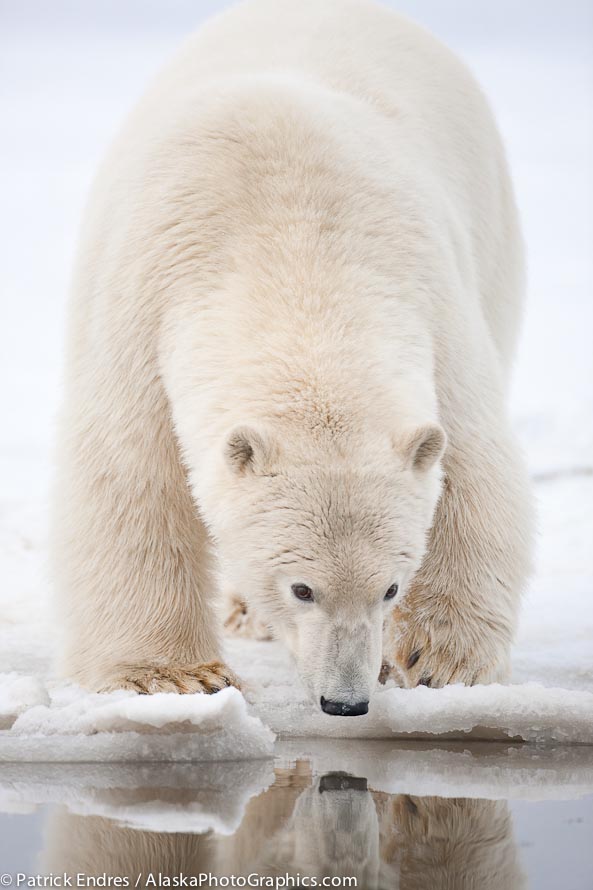
Polar bear reflection along Alaska's arctic coast. Canon 1Ds Mark III, 500mm f/4L IS, 1/800 sec @ f/4.5, ISO 800
A calm day this time of year along Alaska’s typically windy arctic coast is a treat. Such was the case yesterday, at least for a short while. During a photo session with the polar bears, one walked over to the edge of the water and lowered its face to reveal a beautiful reflection. I happened to to have a long lens on my camera, with my focus point set on a specific area. And that is the answer to perhaps your question, and certainly mine: why did I not lower the lens just a little more to capture the full face reflection? Things happen fast and often for a short period of time in wildlife photography. While long lenses have great advantages, I often find that I end up too tight on many subjects. (This is often the case with the 1.3x sensor on the 1D Mark IV and 500mm lens combo. I can’t wait for Canon’s new 1Dx which will finally offer a fast frame rate and buffer at a full sensor size!)
My shooting style is generally in manual mode (when the light is not changing much) with an expose to the right model. I prefer this for the precise exposure control it offers, and it’s consistency presented in post production work. However, there are some drawbacks to manual mode. The main one is that it makes changing exposure values in unexpected situations much slower. For example: in this situation, I was photographing two polar bears fighting and had the shutter speed set to 1/800 second to stop action, resulting in an f/4.5 opening. When I swung over to this scene, I barely had time to quickly focus and shoot, let alone compose much and change exposure. On aperture priority however, it would have been a quick spin of the dial on the back of Canon’s camera to lower the shutter speed and increase the f/stop for greater depth of field. This shot is pretty sharp on the face, but just barely. How many times do we wish we could have an opportunity to reshoot a particular scene!






